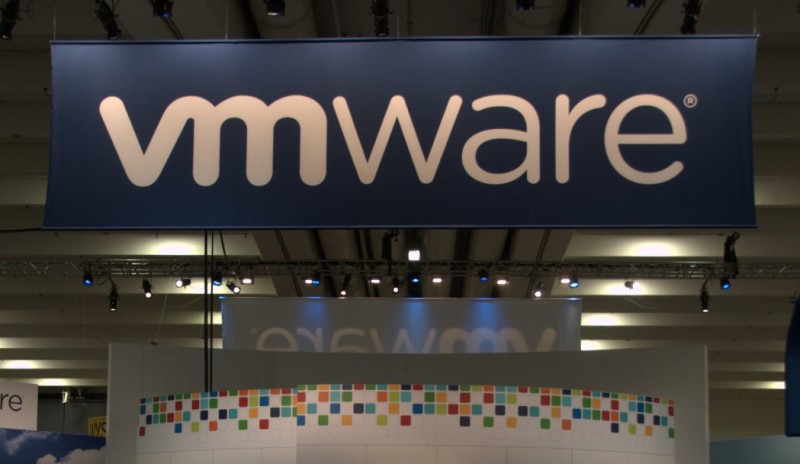 CLOUD
CLOUD
 CLOUD
CLOUD
 CLOUD
CLOUD
VMware Inc. today is rolling out what it says is the most significant upgrade ever to its NSX network virtualization software, one that decouples the network from the VMware hypervisor.
The upgrade essential decouples the network from VMware’s hypervisor, the software that runs virtual machines, or computers emulated in software. VMware’s NSX-T Data Center 2.4 and NSX Cloud now run on infrastructure-as-a-service platforms from Amazon Web Services Inc., Microsoft Corp. and IBM Corp. as well as on VMware’s own hybrid cloud and on-premises products.
With today’s announcement, VMware is going fully after the hybrid cloud and multicloud environments that Gartner Inc. estimates will be common to three-quarters of large organizations by next year. It’s part of the company’s drive toward what it calls the “Virtual Cloud Network,” in which NSX is part of “a ubiquitous software layer from data center to cloud to edge infrastructure.” It’s also the linchpin of the company’s battle with Cisco Systems Inc., which has a similar end-to-end vision.
VMware brings a formidable adoption track record to the contest. It said NSX is deployed in 10,000 customer sites, including 82 of the Fortune 100 businesses and 70 percent of Fortune Global 500.
In addition to running in major clouds, the networking virtualization platform will now be embedded throughout the VMware portfolio, including in VMware Cloud Foundation, VMware Cloud on AWS, VMware Enterprise Pivotal Container Service and VMware vCloud Network Function Virtualization. It will also become part of AWS Outposts, Amazon’s recently announced on-premises version of its cloud stack.
Network virtualization is seen as a way for organizations with large and far-reaching networks that increasingly include multiple clouds to shift from a device-based management perspective to one that is driven by the needs of applications.
“We used to talk about ‘NSX everywhere;’ this extends that concept but shifts the focus beyond everywhere to everyone,” said Jonathan Morin, senior product marketing manager for NSX. “We’re making the application the center of the business.”
The goal is to make the task of provisioning and managing networks as simple on-premises as it is in the public cloud, said Tom Gillis, VMware’s senior vice president of networking and security. “In the public cloud developers can click a button and launch a workload; that agility is driven by software,” he said. ”We’re bringing that same level of automation to the data center.”
One of the most significant features of the new release is simplified installation, which the company said reduces the task of provisioning a software-defined network from days to minutes. Modules built with the Ansible open-source configuration management toolkit enable automation of installation workflows. A new user interface based upon HTML5 has also been added to provide prescriptive guidance that reduces the number of clicks and page hops required to complete configuration tasks, VMware said.
By moving infrastructure management into code, VMware said, it can enable businesses to develop applications more quickly by eliminating provisioning overhead and letting developers handle their own deployment with guardrails defined by policies. “Installation is super-simple,” Gillis said. “You used to have to install a number of components. Now you just have one.”
Software-defined networking also enhances security by making it possible for organizations to specify policies at the application level and not have to worry about configuring individual devices. “There can easily be 5,000 firewall rules in a heterogeneous environment. Writing all of them manually is almost impossible,” Morin said. “NSX has an inherent understanding of what those components are and can apply a policy both on-premise and in cloud mode.”
Network virtualization also improve resource utilization in the same way that server virtualization enables multiple processors to be treated as one. Customers typically see a 30 to 35 percent improvement equipment utilization by virtualizing, Gillis said.
The new NSX doesn’t yet incorporate native features for managing software-defined wide-area networks, but with VMware’s acquisition of VeloCloud Networks Inc. last year it brought those capabilities in house. The two product families will exist independently for the meantime, but “we’re stitching [SD-WAN] together with the data center product at the policy layer,” Gillis said.
Support our mission to keep content open and free by engaging with theCUBE community. Join theCUBE’s Alumni Trust Network, where technology leaders connect, share intelligence and create opportunities.
Founded by tech visionaries John Furrier and Dave Vellante, SiliconANGLE Media has built a dynamic ecosystem of industry-leading digital media brands that reach 15+ million elite tech professionals. Our new proprietary theCUBE AI Video Cloud is breaking ground in audience interaction, leveraging theCUBEai.com neural network to help technology companies make data-driven decisions and stay at the forefront of industry conversations.